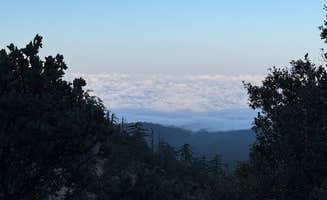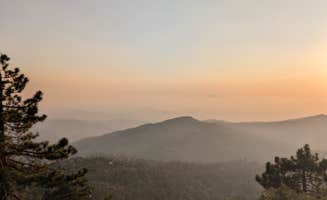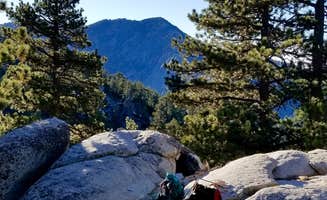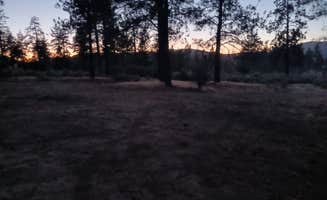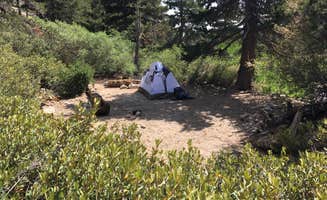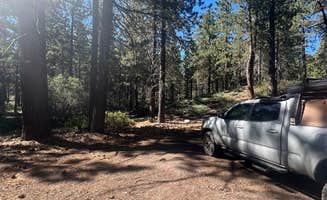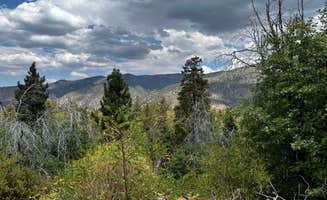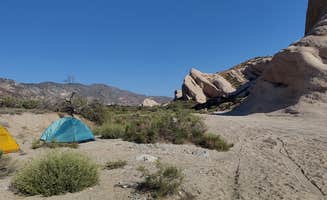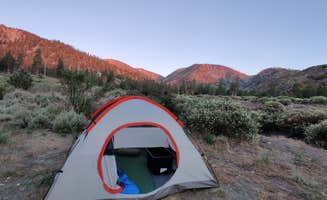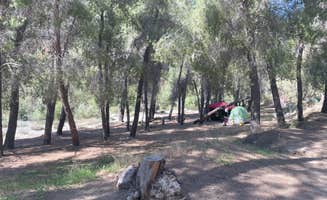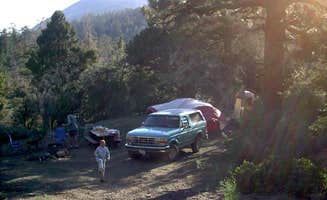Dispersed camping near Lake Elsinore, California offers self-contained camping opportunities in the mountains of San Bernardino National Forest. Situated between 1,300 and 11,500 feet elevation, these areas experience wide temperature fluctuations, with summer daytime highs often exceeding 90°F while dropping below 50°F at night. Winter brings snow to higher elevations, particularly above 5,000 feet, making some roads impassable from November through April.
What to do
Hiking and climbing: East Flats provides access to multiple hiking trails including San Gorgonio Mountain and Jenks Lake. A camper notes, "There's a lot to do with San Gorgonio Mt right here, Jenks Lake, Santa Ana river (and River Trail for MTB)."
Wildlife viewing: South Ridge Yellow Post Sites offers excellent wildlife observation opportunities. One visitor reports, "Wildlife includes deer, lizards, snakes, woodpeckers, and lots of squirrels. Mosquitoes come out at dusk—repellent is a must."
Star gazing: Clear mountain nights at East Flats create excellent conditions for viewing night skies. Campers enjoy "Pines, and clear blue skies! What more can you ask for a few hours away from LA proper..."
What campers like
Secluded campsites: Chinouapin Zone offers isolation with scenic mountain vistas. One camper shared: "This is a unique spot to camp, because you're met with people backpacking the summit and people going through the PCT! There is plenty of space along the trail and it is just a GORGEOUS area to wake up to."
Accessible wilderness: Many dispersed camping areas near Lake Elsinore remain relatively uncrowded, especially midweek. At East Flats, a visitor noted, "We are here RN! It is so peaceful and the air is so fresh! Pines, and clear blue skies!"
Cell service availability: Surprisingly good connectivity exists at many sites. One camper at East Flats mentioned, "loved this spot. easy to find & very lowkey, with ample spaces to choose from. no amenities & great cell service."
What you should know
Road conditions: Many dispersed sites require high-clearance vehicles. At Mill Creek Dispersed Camping, one visitor warned: "The road gets rougher...with lots of potholes and washboard areas, which would make it difficult for an RV. But the biggest issue for RVs is an area of the road that is very steep and immediately turns into a hairpin turn."
Seasonal considerations: Fire restrictions change throughout the year. During summer months, complete fire bans often take effect. Always check current fire regulations before your trip.
Water sources: Most sites lack drinking water. At higher elevations like High Creek Camp, creeks provide filterable water, but lower elevation sites require bringing all water needed for your stay.
Tips for camping with families
Dust management: Many sites have sandy soil that creates significant dust. At Mill Creek Dispersed Camping, one family noted: "It's secluded and has enough trees for a hammock. Our kids loved being able to explore, but they were covered in sand/dirt by the end of the trip."
Space considerations: Holcomb Valley Climbers Camp offers ample room for children to explore. A visitor shared: "Because the National forest allows dispersed camping, as long as your off the roads and trails, the camping spots are unlimited."
Temperature planning: Mountain elevations mean significant temperature drops at night, even in summer. Pack extra layers and appropriate sleeping gear for children, who lose body heat faster than adults.
Tips from RVers
Site selection strategy: For RVs, East Flats offers more accessible options. A camper with a large rig shared: "The campsite was easy to find there are plenty of spots and they are level multiple spots for a class a 34 foot motorhome. I am far enough away where I don't hear everyone talking."
Vehicle clearance considerations: Vivian Creek Camp and other higher elevation sites require careful planning. Most RVs should stick to established Forest Service roads rather than the rougher spur roads leading to remote sites.
Generator usage: While generators are permitted in some areas, their use is often restricted. Check local regulations and be mindful of neighbors when operating generators, especially during early morning and evening hours.


